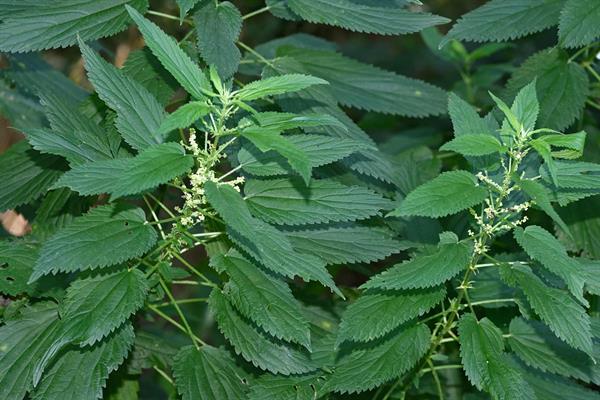
Origin/Endemic status: Native
Taxonomy Comments: The native stinging nettle of North America is best treated as specifically distinct from U. dioica of Europe. Woodland (1982) and Woodland, Bassett, Crompton, & Forget (1982) showed that U. gracilis differs from U. dioica in a variety of morphologic characters (see key), chromosome number (2n = 26 for U. gracilis, 2n = 52 for U. dioica), breeding system (monoecy vs. dioecy), and distribution (North American vs. Eurasian); furthermore, the two taxa could not be crossed. Woodland (1982) chose subspecific status, apparently to emphasize the close relationship of the two (and a third taxa in w. North America). The combination of morphological distinctiveness, allopatry, major differences in species biology, and incompatibility warrants separation as species. F (as U. procera), G (as U. dioica var. procera) and S include NC in the range; Woodland (1982), however, showed the range as extending only south to VA. Henning et al. (2014) further validate the idea that American "U. dioica" is specifically distinct from European U. dioica.
Synonymy: = NY, Grosse-Veldmann & Weigend (2017), Henning et al (2014); = Urtica dioica L. ssp. gracilis (Aiton) Selander – FNA3, GrPl, K1, K3, K4, Mi, NE, Pa, Tn, Woodland (1982); = Urtica dioica L. var. procera (Muhl. ex Willd.) Wedd. – C; = Urtica gracilis Aiton – Ar, Il, S, S13, Tx, Va, WV; < Urtica dioica L. – RAB, Tat, W; > Urtica dioica L. var. procera (Muhl. ex Willd.) Wedd. – G; > Urtica gracilis Aiton – F; > Urtica procera Muhl. – F; > Urtica viridis Rydb. – F, G
Wetland Indicator Status:
- Atlantic and Gulf Coastal Plain: FAC (taxonomic split from wetland indicator species)
- Eastern Mountains and Piedmont: FACU (taxonomic split from wetland indicator species)
- Great Plains: FAC (taxonomic split from wetland indicator species)
- Midwest: FACW (taxonomic split from wetland indicator species)
- Northcentral & Northeast: FAC (taxonomic split from wetland indicator species)
Heliophily: 3
Hover over a shape, letter, icon, or arrow on the map for definition or see the legend.
 © Gary P. Fleming | Original Image ⭷
© Gary P. Fleming | Original Image ⭷ © Gary P. Fleming | Original Image ⭷
© Gary P. Fleming | Original Image ⭷ © Kirsten Johnson | Original Image ⭷
© Kirsten Johnson | Original Image ⭷ © Gary P. Fleming | Original Image ⭷
© Gary P. Fleming | Original Image ⭷ © Erik Danielson source | Original Image ⭷
© Erik Danielson source | Original Image ⭷ © Erik Danielson source | Original Image ⭷
© Erik Danielson source | Original Image ⭷Feedback
See something wrong or missing on about Urtica gracilis ssp. gracilis? Let us know here: (Please include your name and email if at all complicated so we can clarify if needed.)
Cite as...